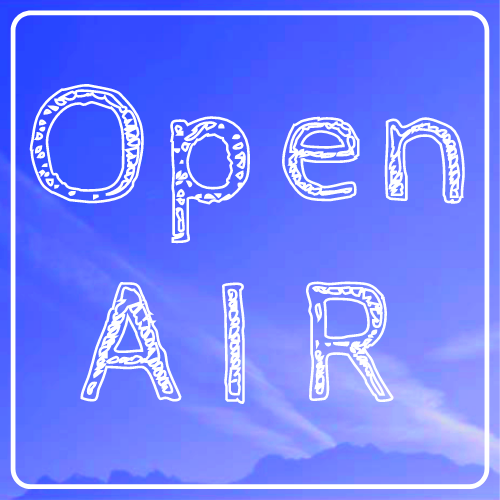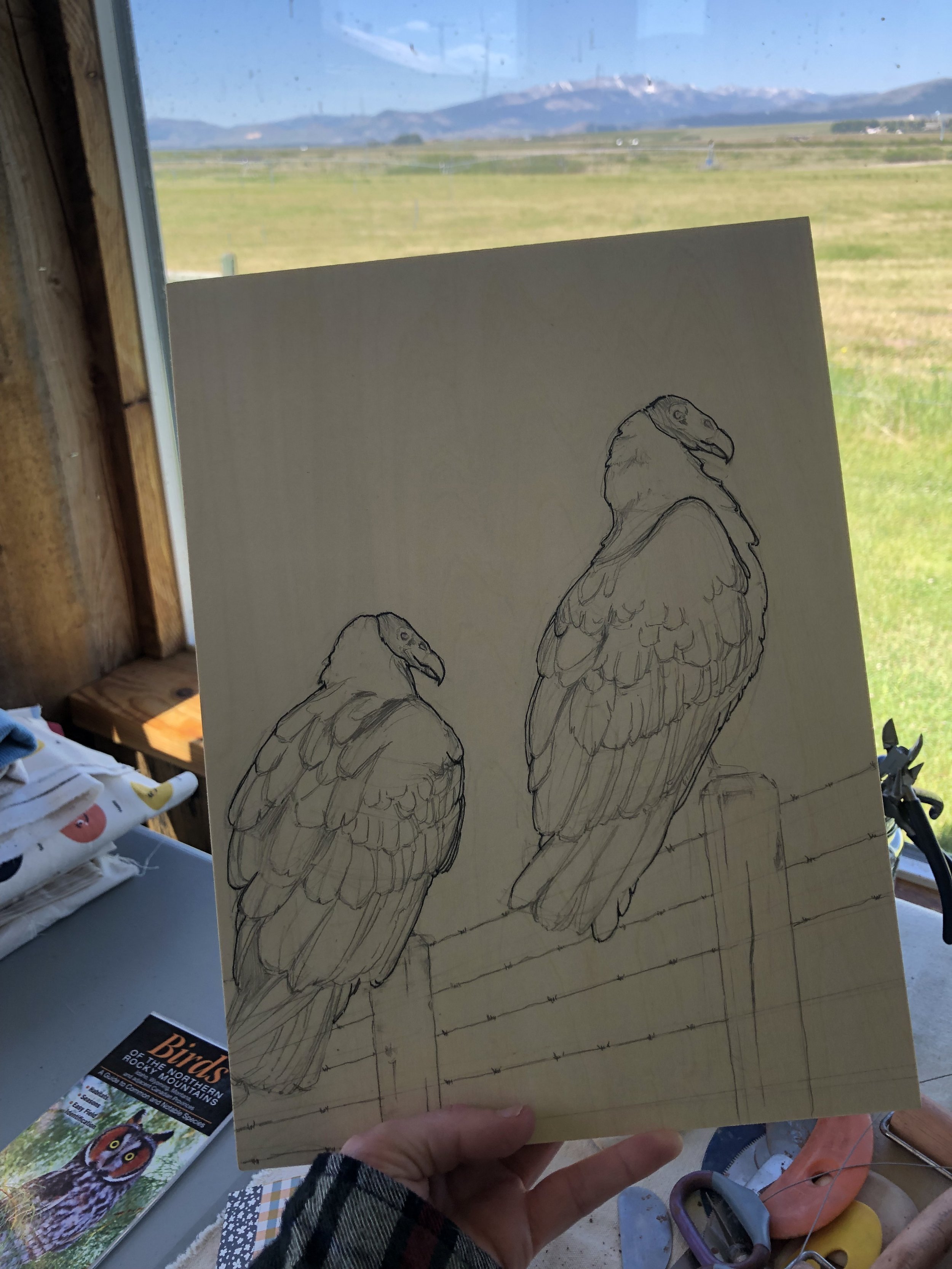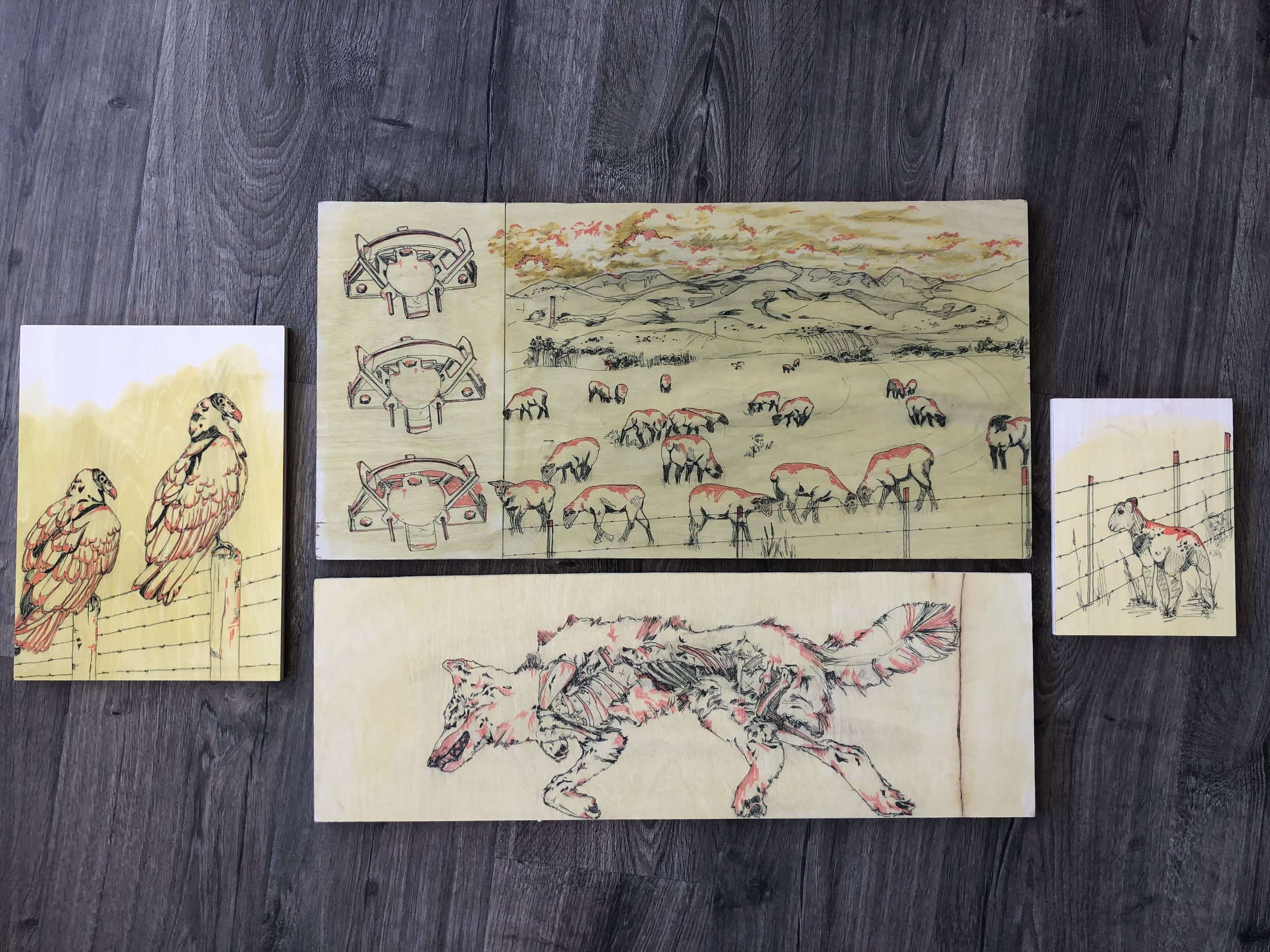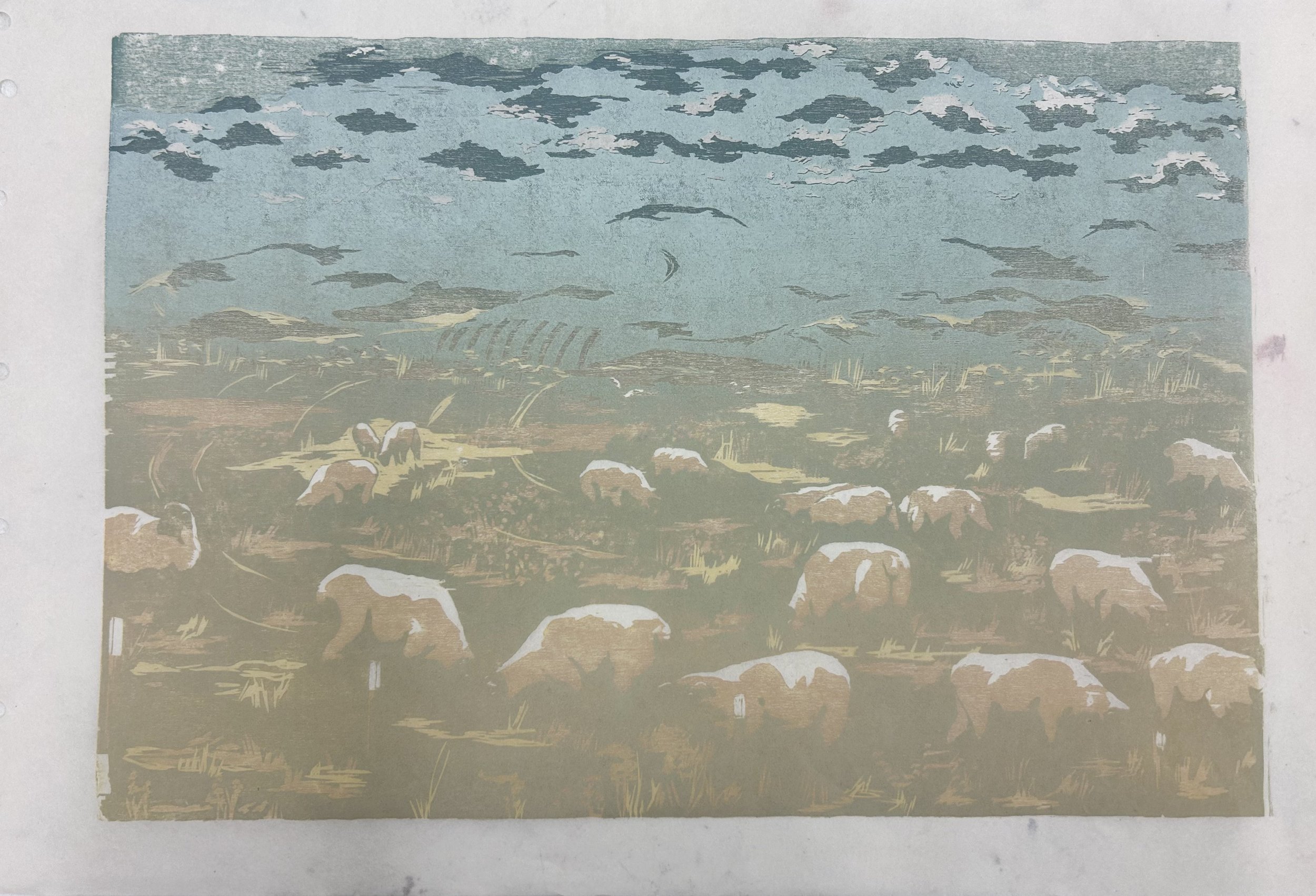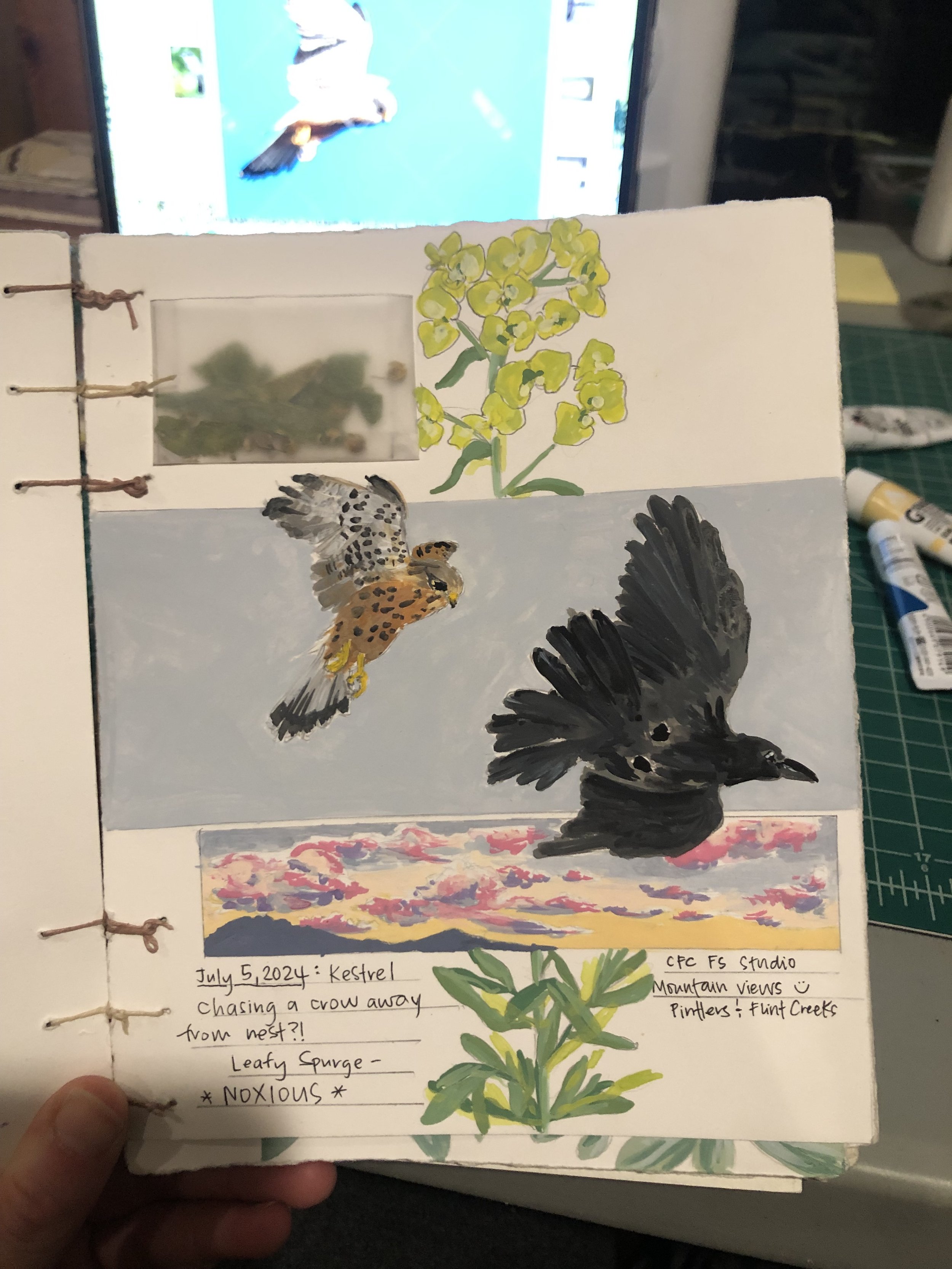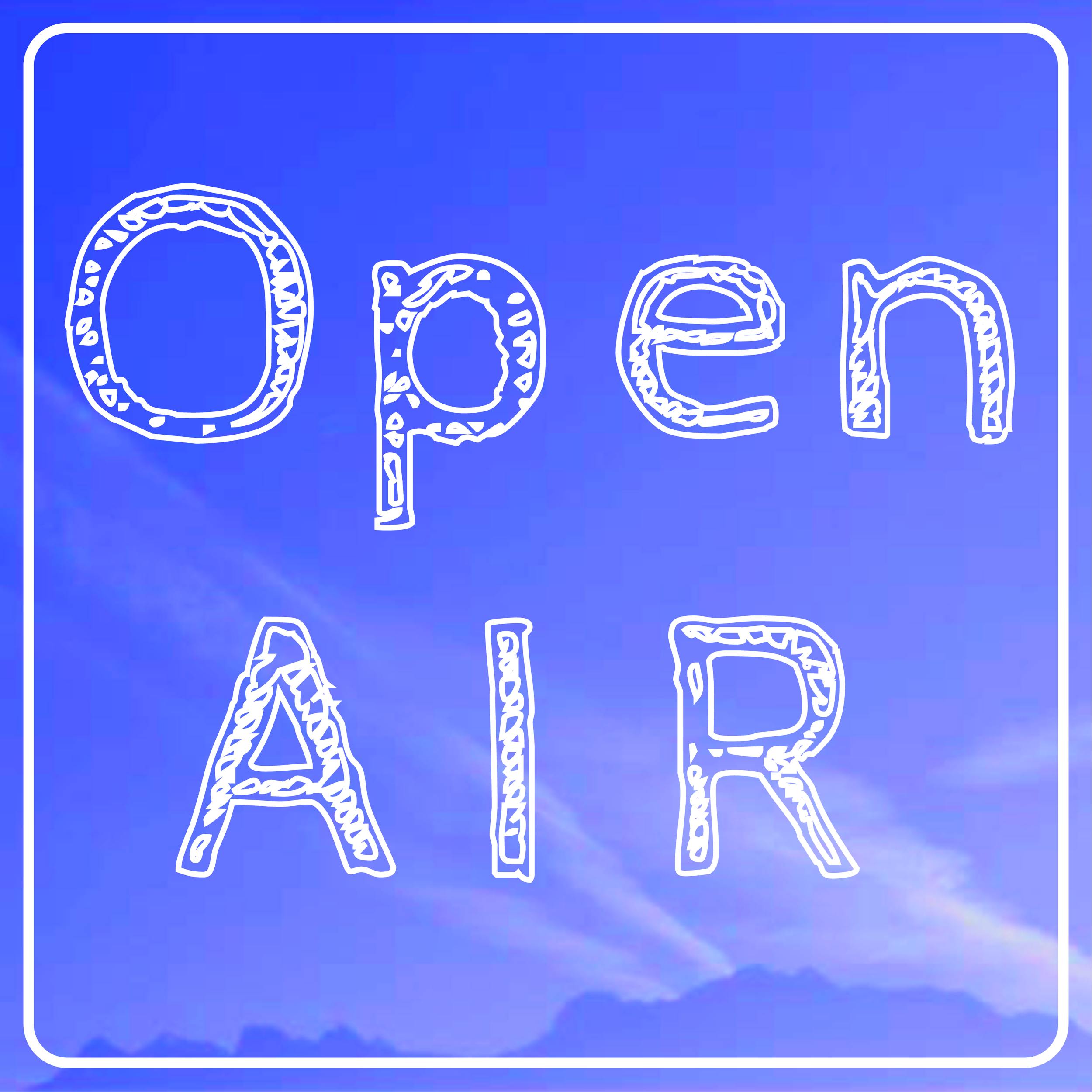Lane Chapman: COLLECTIVE ENGAGEMENT
“Rather than policing individual artists, we should consider how their work intersects with broader movements and whether it helps to shift public perception, policy, or culture. In this light, art becomes not just a creative endeavor but a vital part of the larger struggle for environmental and social justice.“
Summer II 2024 Artist-in-Residence with the Clark Fork Coalition
Lane Chapman in her studio during the Clark For Coalition Residency.
How would you describe the evolution of your work, and how do you hope your audience perceives it?
My work has evolved over the years from making pretty pots that are reminders to pay attention to the nature around you to vessels/sculptures/prints that are darker and more political in content. At least that is what I’m going for - still trying to figure out how to get this content across to the audience. I’m also still exploring how I want my work to be perceived. Do I want it to be hopeful? A call to action? Simply a statement up to the viewer’s interpretation? Do I want it to be shocking? I don’t really know yet. In an ideal world, I’d like all of the above.
Left: View from Lane’s studio space at the Cottonwood Field Station.
Center: Clark Fork River from the Field Station’s river access.
Right: View into the Clark Fork River valley from the CDT trail.
Describe your Open AIR Residency Experience. How did you spend your time, Construct your space, or engage with the community?
During my residency at the Clark Fork Coalition field station, I spent a lot of time bird-watching and learning their calls, watching prairie dogs in the field in front of the studio, staring at the mountains, and watching the clouds. Eric and I also went backpacking along the CDT that overlooked the valley we were staying in. I spent a lot of time along the river, taking walks and riding my bike along the dirt roads.
A working cattle ranch surrounds the field station and it was interesting observing the workings of that and seeing the livestock grazing in the fields. I transferred a lot of these experiences into my work I made while out in the valley.
I spent a lot of time in Anaconda and Butte. There’s a great brewery in Anaconda that I would go sit and sketch, write down my ideas and thoughts. I was able to use the print studio in Butte thanks to the wonderful folx who run it and interacted with the community members that were there while I was printing.
Beginning of a wood carving of vultures by Lane.
I’m primarily a ceramicist, but while at the field station I focused on printing, drawing, and painting (mostly watercolor and gouache).
I transferred what I was seeing and experiencing directly from my studio chair into prints and paintings. At first, I thought these were about ranching, but they go deeper than that. While I was in this valley I learned about the extensive history of mining contamination in the Anaconda region. This exposure deepened my understanding of the environmental impacts of the Upper Clark Fork River. In addition to these issues, I was thinking about the Victorian era and how they romanticized nature while actively destroying it (because of the height of industrialization, i.e. beginning of mass pollution).
Woodblock series prepped for carving.
Reduction woodblock print by Lane.
This residency helped me realize what I was actually interested in making work about. I’ve always made work about nature and the environment and what I learned of the environmental history of that area opened up a lot of content for me.
I’m currently reading Rebecca Solnit’s “Savage Dreams: A Journey into the Hidden Wars of the American West” as it aligns with my ongoing explorations of the interactions between the landscape and humans.
A page from Lane’s sketchbook during the residency.
Is there a particular goal or mission driving your creative journey?
Our collected ecological grief and responsibility to each other and this planet is what drives my creative journey. Again, I’m not quite sure yet how to portray this or what I want my audience to take away from it, but I will continue exploring ways to do so.
Lane’s Artist Talk at the Clark Chateau in Butte, MT.
Tell us about your most recent solo exhibition.
I’m currently in grad school and I recently gave my Pre-Candidacy Review, it’s a requirement halfway through the grad program. I installed a solo show and gave a presentation about those pieces. It was a great (and challenging) experience where I was able to gather my thoughts and form a cohesive understanding of what those works mean, why I’m making them, and how the work connects to historical and contemporary references/movements.
Here is my thesis statement from my presentation:
Using ceramics and prints, my work explores the complexity of human relationships with nature – an interplay of admiration and exploitation. Drawing on the Victorian tradition of adorning homes with botanical motifs and references to the natural world, my work explores this historical celebration of nature’s beauty with the harsh realities of industrial contamination and ecological decay. I invite viewers to contemplate our shared ecological grief and collective responsibility.
The work I made for this exhibition was solely inspired by the upper Clark Fork River valley and my experiences during my Open AIR residency.
If you are interested in learning more:
Lane Chapman
CuxSy (Copper Sulfides)
Stoneware, copper, acrylic paint, high temp wire
2024
What are you up to now (post Open AIR)?
I’m going into my fourth semester of grad school at UM. I’m brainstorming ways to move forward post pre-candidacy review. I’ve always felt the need to make work that could provoke thought, action, and change the way things are in society for the better. But that is a huge feat to tackle, and honestly, I think it's unrealistic. So I’m thinking of how I will move forward. I’ve been reading about and looking at socially engaged art that invited the community to participate. Maybe that is the direction I will head. Here is an excerpt from an essay I wrote about the paradoxes of contemporary environmental art. I think this explains my thoughts of how to move forward (in my own opinion):
Should artists instead focus on exposing the corruption and hypocrisy of those in power? The disproportionate impacts of climate change on marginalized communities highlight the need for unity in addressing the crisis. While no clear answers emerge, the role of art in challenging power structures, addressing systemic inequalities, and uniting people across divides is undeniable. In this sense, art could be a vital step toward both environmental and societal progress. If anything, it is necessary for artists—and everyone—to become activists. Art is not just about creation but participation: sharing, donating, coordinating, and raising awareness. Not acting at all contributes to the issues, making inaction as complicit as the systems causing harm. But is it possible for these artistic efforts to always catalyze real change? Given the immense challenges we face, it's hard to say, but we must remain realistic while holding on to hope. In a world where time is running short, even small, collaborative actions have the potential to create meaningful progress. Artists and activists are not alone in this struggle, collective engagement is our best chance to push for change—however difficult it may seem. Rather than policing individual artists, we should consider how their work intersects with broader movements and whether it helps to shift public perception, policy, or culture. In this light, art becomes not just a creative endeavor but a vital part of the larger struggle for environmental and social justice.
I think this also addresses the question of why art/artists matter.
